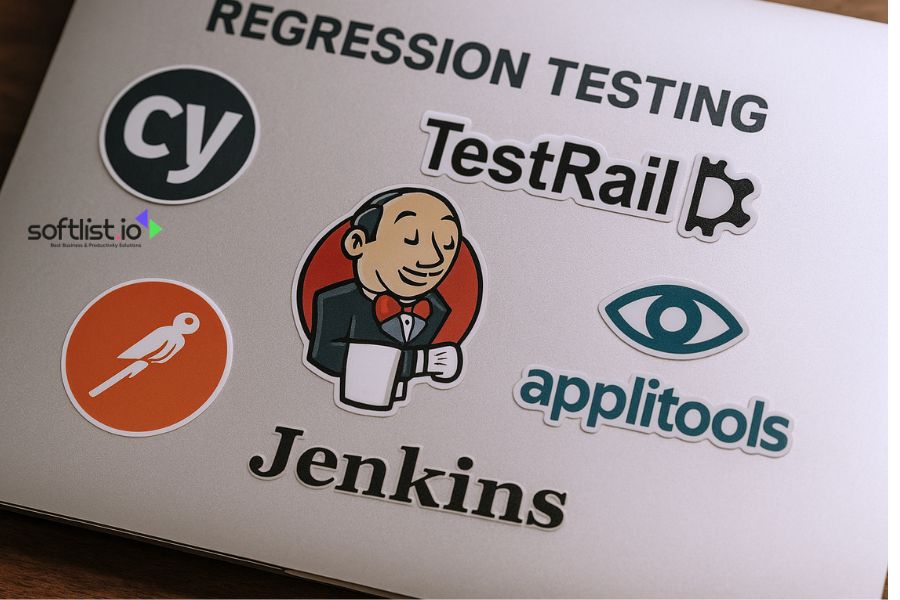Regression testing is a very important part of software development, designed to catch issues that arise when new code changes impact existing functionality. The most commonly identified bugs in regression testing include previously fixed defects that reappear, broken features, integration errors between system components, and issues that occur when new changes conflict with established functionalities. Regular and thorough testing helps maintain the reliability of software, especially in rapidly evolving projects.
Quality assurance teams rely on detailed test cases to pinpoint issues efficiently, ensuring that both visible and hidden problems are caught before updates are released. Using different approaches to regression testing, including automated processes, allows teams to keep up with the demands of modern software development and increase coverage, as outlined in this overview of automated regression testing practices.
Key Takeaways
- Regression testing finds the most common recurring and integration bugs.
- Detailed test cases and automation help maintain consistent software quality.
- Adopting best practices in regression testing ensures stable functionality after updates.
Why Regression Testing Is Necessary

Source: Canva Pro
Modern software development is fast-paced. Code is deployed more frequently, often with tight deadlines and collaborative teams working across different features. In this context, it’s easy for a new change to unintentionally break something that was previously working.
Regression testing offers the confidence that existing workflows, user journeys, and integrations remain stable and unaffected by recent changes. It also reduces the risk of critical bugs slipping into production, where they’re more expensive and time-consuming to fix.
In fact, according to the Capgemini World Quality Report, nearly 60% of companies rely on regression testing as part of their standard release process—proving its importance in maintaining digital quality at scale.
Let’s take a closer look at the most common bugs identified during testing and how quality assurance (QA) teams can best detect and prevent them.
Most Common Bugs Identified in Regression Testing

Source: Canva Pro
Learn about the frequent types of bugs that typically surface when recent code changes affect existing functionality.
1. Functional Regression Bugs
These bugs occur when a previously working function stops behaving as expected after code updates. They are typically related to business-critical processes, such as:
- Failing to submit an order or form
- Inaccurate price or tax calculations
- Broken login or authentication systems
- Missing or misrouted transaction data
Even minor changes—like updating a backend library or modifying an API call—can lead to these bugs if dependencies are not properly managed. Since these functions are essential to the core product, their failure can have significant business implications.
Functional regression is particularly disruptive because it affects users directly. If a checkout process fails or a search filter stops working, it can lead to user frustration, abandonment, and churn.
2. User Interface (UI) Defects
UI bugs often surface during regression testing due to changes in layouts, themes, CSS rules, or JavaScript functionality. Although UI defects might seem cosmetic, they directly affect how users interact with your platform.
Common UI bugs include:
- Misaligned or overlapping content
- Unresponsive buttons or links
- Disappearing menu items
- Incorrect colors or fonts
- Poor performance on mobile or smaller screens
These types of bugs are often overlooked in early development phases, making this type of testing critical for preserving a consistent and intuitive user experience. Visual testing tools and screenshot comparison utilities help detect these changes early before they reach production.
3. Integration and API Errors
When software systems consist of multiple interconnected modules or rely on third-party services, integration bugs can be common. Regression testing often identifies problems such as:
- Broken API calls or unexpected API responses
- Incorrect data transfer between modules
- Inconsistent behavior when components are combined
- Changes in database schema breaking the front-end
These bugs may not show up when testing isolated components but appear during end-to-end scenarios. For example, a frontend change may no longer align with a backend validation rule, resulting in failed user submissions.
4. Reappearance of Fixed Bugs (Reopened Defects)
Regression testing sometimes reveals that previously resolved bugs have resurfaced. These reintroduced defects occur when:
- A past issue is unintentionally reintroduced in a different part of the system
- A developer rolls back code that had previously included the fix
- Conflicting merges or overlooked test coverage cause the problem to return
- Dependencies or third-party libraries are updated, indirectly breaking the previously fixed behaviour
Tracking these bugs and ensuring they don’t repeat requires careful version control, thorough documentation, and effective use of bug-tracking systems. Additionally, automated regression suites and peer code reviews play a critical role in catching these issues early and maintaining long-term software quality.
5. Performance and Load Issues
Although regression testing is often focused on functionality, it can also catch performance-related bugs. These include:
- Increased page load times after an update
- Slower API response times due to backend changes
- Higher memory or CPU usage
- Latency issues in real-time applications
These problems might not crash the system, but they degrade the user experience. Regression testing can involve performance baselines to ensure the software behaves consistently under expected load conditions.
Key Regression Testing Practices to Detect Bugs

Source: Canva Pro
Explore essential methods and strategies used by QA teams to effectively identify and prevent bugs during regression testing.
1. Types of Regression Testing
There are different categories of regression testing, and each serves a specific purpose depending on the scope of changes:
- Unit Regression Testing – Ensures individual units (functions, methods) still behave correctly
- Partial Regression Testing – Focuses on modules directly affected by the latest changes
- Complete Regression Testing – Involves testing the entire application; ideal before major releases
- Smoke Regression Testing – Verifies that essential functionality works after minor updates
- Selective Regression Testing – Targets only specific features or areas with a high risk of being affected
The right type depends on how large the code changes are, how much time the team has, and what’s at stake if a bug slips through.
2. Automation in Regression Testing
As projects grow in complexity, automated regression testing becomes crucial for maintaining quality. Automation allows teams to:
- Run tests frequently and on-demand
- Increase coverage across devices and browsers
- Detect bugs early in the development pipeline
- Save manual effort and reduce testing time
Tools like Selenium, TestNG, Cypress, and JUnit are commonly used to automate repetitive test cases. These tools can simulate user actions, interact with APIs, and validate data output. Integration with CI/CD pipelines ensures that tests run every time new code is committed, enabling fast feedback loops.
That said, not everything can be automated. Tests involving complex visual elements, emotional tone, or subjective judgment still require manual validation.
3. Manual Testing’s Role in Regression
Manual testing is particularly useful in these scenarios:
- Validating user interfaces across unusual screen sizes
- Testing features that rely on human interaction, like chat or accessibility tools
- Exploring unexpected workflows or edge case
- Verifying fixes for high-priority bugs before release
Manual testing is more flexible, allowing testers to adapt to real-world usage patterns that automation might not anticipate. Combining manual insight with automated efficiency provides the best of both worlds.
Best Practices to Improve Bug Detection in Regression Testing
To get the most value from regression testing, teams should follow structured best practices:
- Maintain a central test case repository that is regularly updated
- Prioritize testing areas with high user impact, such as payments, onboarding, or search
- Use code coverage tools to identify and close gaps in test coverage
- Tag test cases by risk level to help prioritize regression runs
- Monitor testing metrics, including pass/fail rates and defect recurrence
A regression testing strategy should evolve with the product. As new features are added, testing scope must expand, and older test cases must be refactored or retired to stay relevant.
Tools That Support Regression Testing

Source: Canva Pro
A number of QA tools help teams detect and prevent regression bugs:
- Cypress – Great for UI automation and frontend workflows
- TestRail – For test case management and reporting
- Jenkins – A popular CI tool that runs regression test suites on every build
- Postman – Useful for regression testing APIs
- Applitools – Offers AI-powered visual regression testing
These tools help streamline the process and ensure consistent execution, even as team size or complexity increases.
Conclusion
Regression testing is an essential safety net in the software development lifecycle. It helps ensure that updates and changes do not break existing functionality, damage the user experience, or cause business-critical failures. The most commonly caught bugs during regression testing include:
- Functional defects affecting key workflows
- UI-related issues that degrade usability
- Integration problems between modules and APIs
- Resurfaced bugs due to faulty rollbacks or merges
- Performance degradation not noticed in isolated tests
These bugs, if left undetected, can harm product quality, affect end-user trust, and lead to revenue loss. That’s why regression testing is not just about maintaining code—it’s about maintaining confidence in the product.
By adopting a well-rounded regression testing approach—combining manual and automated tests, using the right tools, and focusing on both code and user impact—teams can deliver more stable and reliable software. Regular testing cycles allow teams to catch and fix issues early, avoid last-minute surprises, and maintain high standards even in fast-paced development environments.
Ultimately, regression testing supports the long-term success of a software product. Whether you’re working on a web app, mobile app, or enterprise system, incorporating regression testing into your QA strategy is one of the smartest ways to ensure smooth, high-quality user experiences with every release.






